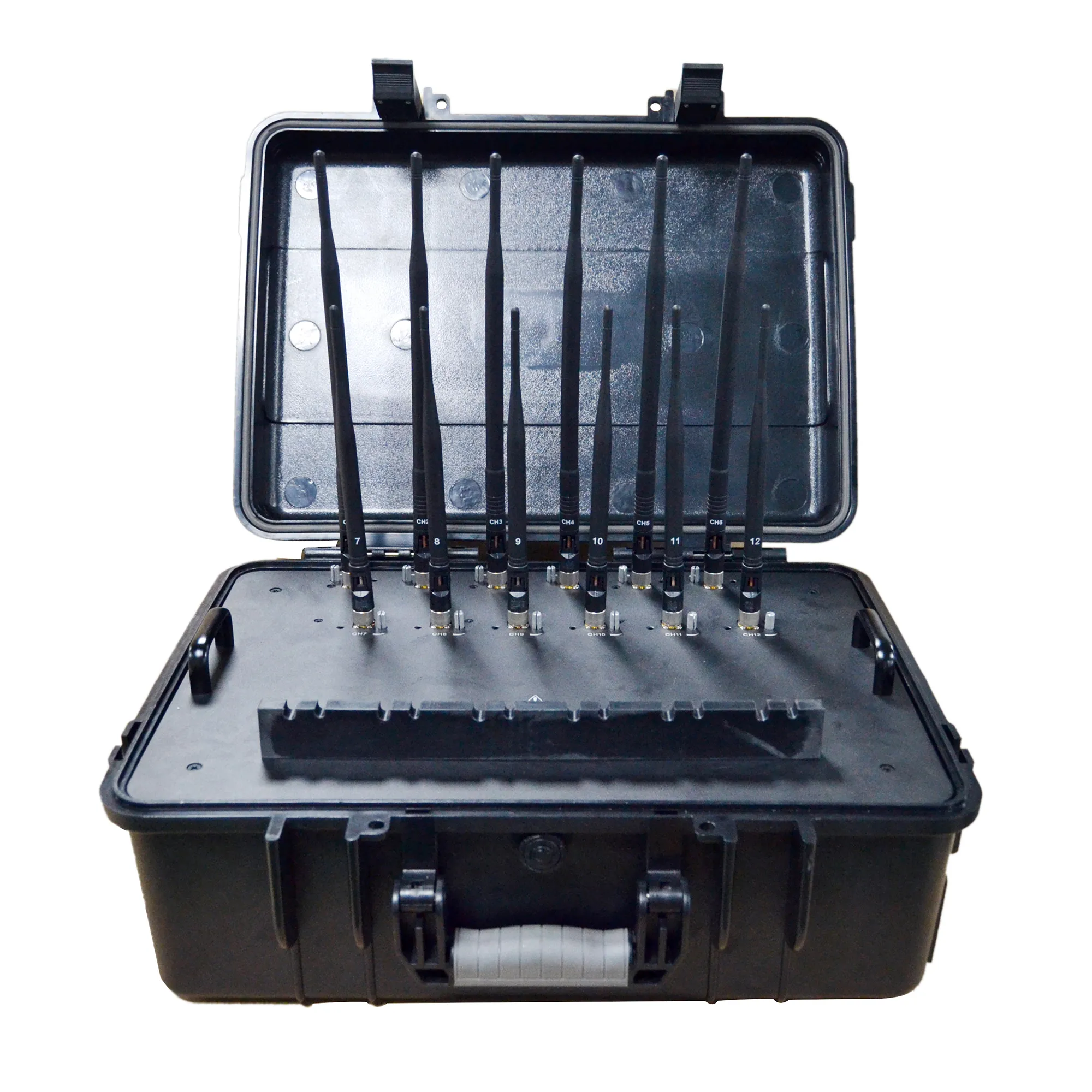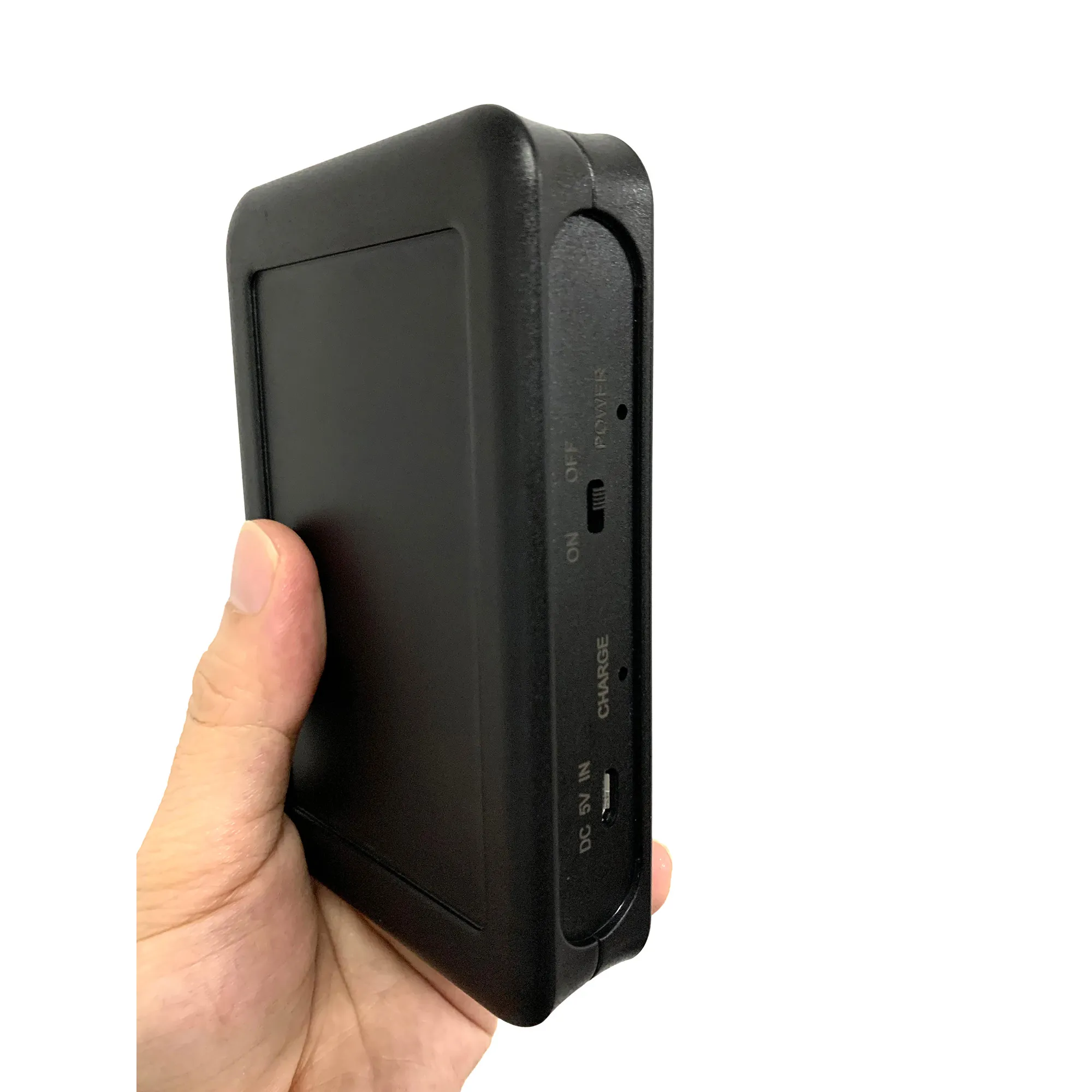In the cool and dark hour after midnight on June 20, 2012, Todd Humphreys made the final preparations for the attack on the GPS. He stood alone in the middle of the White Sands Missile Range in southern New Mexico, 60 miles north of Juárez. Around him are the gypsum dunes of the hot Chihuahua Desert. In the distance, the snow-capped mountains of San Andres stand out.
On a hill about a mile away, his team gathered in a flat metal box the size of a suitcase. The electronic machinery in the box is called "spoofer"-a weapon. Soon, an unmanned helicopter "Hornet Mini" (Hornet Mini) became popular among law enforcement and rescue agencies, and is expected to appear 40 feet above it. Then test the blowout preventer.
Humphreys, an engineering professor at the University of Texas at Austin, has been studying this deception technique for years, but he is nervous. In the morning, about 15 officials composed of the FAA, the Department of Homeland Security, and the Air Force's 746th Test Squadron witnessed the test. They are the masters of Humphreys, but they do hope he fails. Its success will cause significant losses to the entire GPS, and therefore have a significant impact on the effectiveness of some of the country's major military and defense systems. UAVs that rely on GPS navigation have become an increasingly indispensable part of our safety equipment. The demand for them is increasing elsewhere. There are more than one million recreational drones flying in the air compared to four years ago. Sales of commercial-grade high-precision drones-everything from pipeline inspection to 3D mapping-have grown by more than 500% over the same period.
When DHS first contacted Humphreys a few months ago, the department was particularly concerned about a GPS vulnerability-a system outage called jamming. By launching jamming, jamming opportunities can overwhelm GPS signals and make the drone's receiver inoperable. There is no big mystery about how interference works, but DHS approached Humphreys because he wanted to test the actual technology: Is he interested in helping with the demonstration?
Humphreys immediately accepted the invitation, and then told officials that he wanted to focus on another, more complex threat. In 2011, Iran successfully occupied a CIA drone about 100 kilometers from the Afghanistan border, making headlines. No one can be sure how the crisis occurred: interference may cause the drone to get lost, but it cannot be controlled. Humphreys believes that Iran has successfully deceived the signal-not only has it GPS Jammers, but actually replaced it with a ghost GPS signal. If you are deceived into trusting the fake system, you can then commandeer and capture the aircraft. Humphries said to DHS: "Let's try something more ambitious."
Humphries is now forty-five years old and fascinated by science, which may make him look younger than his actual age. He is serious and farsighted. You can imagine that he hosted a PBS children's show and started broadcasting 1 million majors. Humphries originally came from Utah and planned to become a patent attorney. However, as an intern at NASA's Jet Propulsion Laboratory, he listened to NASA lawyers discussing the issue of upcoming patents and realized that he wanted to be a sort of person, not approve the invention. "I thought, why should I stand by the table?" He was just taking notes," Humphreys told me. Humphreys had been reading GPS when he was studying engineering at Cornell University. The jammer is interested.
Global Positioning System. The company is owned by the Department of Defense and is operated by the US Air Force in a highly secured room at the Colorado base, and is free for anyone in the world to use. There are 24 GPS satellites in the world, orbiting 20,000 kilometers. Each satellite sends out a radio signal, which contains a time code and a description of the satellite's exact location. By measuring the signal transmission time, the GPS receiver can determine its distance to the satellite. If the receiver simultaneously receives signals from at least four satellites within the line of sight, its position can be inferred in three dimensions. In about 67 milliseconds, the signal reaches our hands and the signal becomes extremely weak. The task of receiving the signal and
Since the launch of the first GPS satellite in 1977, the basic technology of the system has remained the same, but its use has increased exponentially at an alarming rate. Although the Air Force supervises the satellites that emit signals, once these signals are spread around the world, they belong to everyone. Because GPS is a "passive" system-that is, it only requires users to receive signals, not to send signals-it can cope with unlimited growth. The number of GPS receivers will double tomorrow without affecting the infrastructure at all. From improving maps to measuring the tiny movements of tectonic plates, people have devised smarter ways to use GPS jammers. The signal indicates that the original architect of the system was unimaginable. Humphreys is one of the innovators.
The test day in Baisha was the first time that the Humphreys team used the scooter outside the laboratory: because it is illegal to transmit fake GPS signals, they have never even conducted a full-body exercise. For Humphreys, who made money at children's parties as a magician during college, it was like creating a difficult trick without any practice. The Hornet appeared at around 2 am, hovering forty feet above the missile's range. Humphreys spoke a code on his portable radio: "Lightning". On the mountain, his students opened the scooter. They gradually increased their strength and directed the wrong signal to the Hornet, which seemed to sway in the air, as if it had encountered an invisible obstacle. The deceiver is essentially whispering in the ears of the drone, providing it with inaccurate information about its location. The drone was convinced that it had drifted upwards, so it tried to correct it and dived down the steep ground. When he was about to fall into the ground, a manual operator grabbed the control device and pulled the bumblebee down. The Humphries team made a party cry through the broadcast. Pull the hornet. The Humphries team made a party cry through the broadcast. Pull the hornet. The Humphries team made a party cry through the broadcast.
"We are the only ones applauding," he told me recently. His master looked very cold. When Homphreys did not hesitate to promote the exploit, they were even more frustrated. He said: "I have been told that I will never be invited back." "They may think I will give a sleepy speech in the university newspaper. But I have always wanted to communicate with the world what I think is shocking.
Since the GPS project was launched in 1973, its satellite signals have been a source of controversy. This is the idea of an air force colonel named Bradford Parkinson, who disillusioned the wanton air combat of the Vietnam War and designed GPS as a method to improve the accuracy of precision bombing. . The Parkinson's disease research team designed two versions of GPS signal jammers, one for civilian use and the other for military use, with stricter security protocols and more accurate readings. However, when the first GPS satellite was launched into the sky, people soon realized that civilian signals were more accurate than their architects expected. Smart scientists discovered that although the information content of military signals has been highly encrypted, it is not difficult to pick up the radio signal itself. It's like collecting the information in a sealed letter by looking at the stamp on the envelope.
In the 1990s, the Pentagon deliberately sabotaged civilian signals-a practice called "selective availability"-hoping to stop terrorists or other bad actors who might otherwise use the signal to launch precision attacks. On American assets. But here, the user also found a solution. An order of President Bill Clinton came into effect in 2000, and the order stopped the Pentagon’s plan. Global Positioning System. Now it can reach its full potential.
Soon, the civilian GPS industry is booming. By the middle of this century, Garmin, a large GPS user company, had sales of more than $1.6 billion. Motor vehicles are proliferating at an annual rate of over 140%. The boom of in-car GPS is of course replaced by the boom of smartphones: GPS is now something you carry with you. However, the explosive growth of the civilian GPS market has also prompted people to try to destroy the signal. Nowadays, GPS jammers are sold for hundreds of dollars on the Internet, providing an easy way out for anyone worried about employer monitoring. A few years ago, there were many truck drivers
Global Positioning System. For reasons unrelated to geographic positioning, "geographic information systems" are now vital. Since GPS clocks are synchronized to nanoseconds, network signals are used in time-related systems that are uniformly distributed over a large area. Global Positioning System. Time helps to call back between cellular towers, regulate the flow of energy in the grid, and time-stamp financial transactions on major stock exchanges. If a spoofer provides wrong information and even confuses the clocks in several nodes of these systems, the damage can be widespread: as the time error increases, the communication system may fail, and energy distribution may be uneven Lead to Power outages and automated trading procedures. May withdraw from the market and cause accidents. These are just a few cases. We still don't know exactly how to protect this critical and porous technology.
In 2001, the Department of Transportation issued a report warning that GPS could become an "attractive target" for American enemies. This joint study is the first official recognition of identity theft as a real and major threat. Humphries heard about the report at Cornell University. The worst usurpation situation he described seemed to be something he could do on his own-in fact, he could do better on his own.
Humphreys suspects that these crude attempts at identity theft for the first time will be easy to detect and stop. He believes that the real threats come from software-defined deceivers, and they will be stronger and more subtle. Traditional receivers rely on GPS chips, which makes them fast but relatively inflexible: you can only change the physical hardware. By relying on code, software-defined receivers can be expanded infinitely. Humphries began to build one. Humphreys claimed that the completed model took several years to complete. The "real beast" called it, in part because it could not test it in real terms without breaking the law. He started with the help of Cornell and students in the Radio Navigation Laboratory at the University of Texas. It was this device in a luggage-shaped metal box that destroyed the Bumblebee in Baisha.
In the months after the first demonstration, Humphreys continued to test the pedal and produced an ever-growing list of its features: it could replace the timing system used by cell phone networks, Power grids, and radio programs. trading. The initial good news is that Humphreys may be one of the only software-defined scooters in the world. In the past few years, the FBI has been visiting his office regularly to ensure the safety of his creations. Humphries was happy to comply-he didn't want the technology to spread more widely than the FBI-but by 2016, deceptive GPS codes had appeared online, at security conferences and conferences. hacker.
Then, it seems to highlight this problem. In February 2016, a software failure of the Colorado GPS master control station caused some satellites to have 13 microsecond clock errors. This problem took several hours to resolve, during which time the infected satellite spread temporary pathogens around the world. The worst disaster was avoided (professional newspaper GPS World declared that "the world avoids GPS bullets"), but the computer network collapsed and digital broadcasting (including the BBC) was destroyed. System engineers can't help but imagine and worry that the nightmare they almost avoid may soon become a reality.
Humphreys' last experiment with his scooter was a bit like a lark: the owner of a 65-meter superyacht invited him to try to conquer the entire Mediterranean voyage from Monaco to Greece. The Humphreys crew stood on the upper deck, pointed the antenna at the ship’s antenna, and dragged the ship hundreds of yards away. The experiment was harmless, but it turned out to be a harbinger of some more mysterious uses of identity theft.
Four years later, in June 2017, the French tanker Atria crossed the Mediterranean, crossed the Bosphorus and entered the Black Sea. As the ship sailed towards Novorossiysk, Russia, the captain Gurvan Le Meur noticed that the ship’s navigation system seemed to have lost its GPS signal. The signal came back soon, but the location it gave was far away. Atria was apparently located about 40 kilometers inland and crashed at the airport in the Russian resort of Gelendzhik.
Le Meur communicated with nearby ships via radio, and its captain reported a similar malfunction in its navigation system: a total of 20 other ships were "transported" to the same domestic airport. At the same time, something similar happened in Moscow-this time it was aimed at Uber customers, not the captain. Passengers on short trips find that their accounts are charged for travel to one of the city’s airports or even thousands of miles away.
This activity attracted the attention of the Advanced Defense Research Center (C4ADS), which is located in Washington and is dedicated to security issues. Researchers used maritime treaties to continuously broadcast the ship data needed for their location and found that the problem of identity theft was much greater than anyone thought. According to a report issued in March 2019, there were tens of thousands of maritime plundering incidents between February 2016 and November 2018, affecting approximately 1,300 ships. For ground vehicles, it is more difficult to find similar data, but C4ADS uses data from
Once they recorded the time and location of the identity theft, the researchers compared this information with the travel schedule of Russian President Vladimir Putin. One fall afternoon in 2017, six minutes before Putin gave a speech in the coastal city Bolshoy Kamen, GPS coordinates showed that he was jumping at the Vladivostok airport. In 2018, when Putin witnessed the official opening of a bridge across the Kerch Strait, at least 24 ships in the area marked its location as Anapa Airport, 65 kilometers away. . What happened? The president’s security department is increasingly likely to travel with portable software-defined scooters,
















